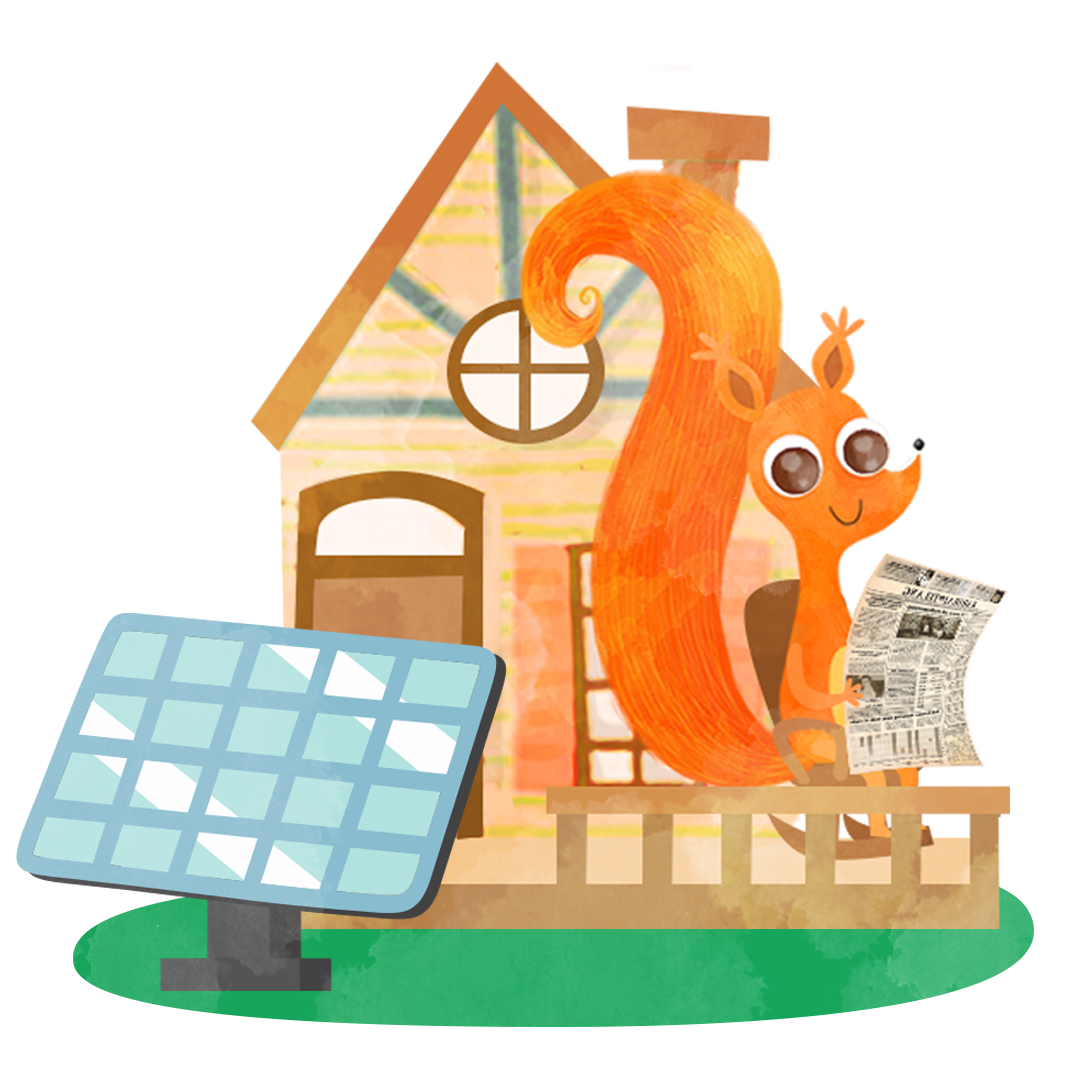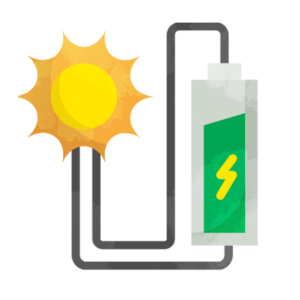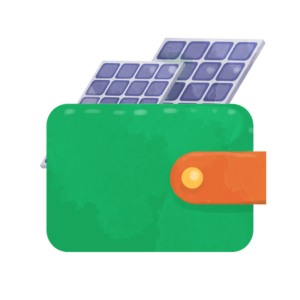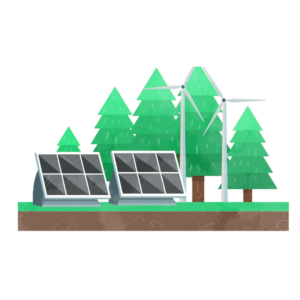
Are you tired of paying astronomically high utility bills?
Have you woke up sweating from nightmares about environmental disaster?
Do you wish there were a way you could simultaneously save money on your monthly electricity bill and do your part to keep the planet alive a little bit longer?
If any of this resonates with you (and you own your home) you might want to consider installing a solar panel system. Sure, you might end up shelling out for upfront costs, but given the long term savings you can expect and the healthy subsidies currently available, it could easily be worth the investment.

Unfortunately, not just anyone can slap a couple solar panels on top of their house and start raking in cash. How long it will take your solar panels to offset the installation costs is going to depend on several key factors:
You might want to sit down before I unveil this absolutely universe-shattering truth: solar panels work best when they are bathed in sunlight all day long.
(Pause for recovery.)
Actually, there is a little more nuance to this than simply “more sunlight = more energy.” While total daily hours of sun exposure does impact the overall amount of energy your solar system will produce (generally 3–4 hours per day is considered acceptable), there are a couple of other factors that matter nearly as much:
This is the actual intensity of the sun as it hits your solar panels. For example, if you live in Alaska, you might get quite a lot of sun over the course of a June day; the actual intensity of that sun, however, is much lower than it would be in, say, Arizona.
If you want to check what the average daily solar irradiance is in your area, the National Renewable Energy Laboratory (NREL) created a free-to-use solar resource map that tells you just that.
This is going to sound counterintuitive after everything we just said about solar irradiance, but solar panels actually tend to be more effective when operating in cooler climates. For a lot of complex, sciencey reasons we don’t really understand, most solar systems lose efficiency when operating above 77 degrees Fahrenheit.
So, while a solar system in Arizona is going to get a lot more sun exposure at a much higher intensity, it actually isn’t going to utilize that energy quite as effectively as one in New York would.
Don’t get me wrong: Arizona is still one of the best places to utilize solar power, due to the intensity and duration of sunlight exposure on a day-to-day basis. This just means that even in areas with weaker sunlight, you could still set up a solar system that will save money in the long run.
Just like you wouldn’t store your ancient Grecian vase in a dilapidated, old barn that might fall down at any moment, you don’t want to install solar panels on a roof that will need maintenance anytime soon.
If you know that you’re likely going to need to have your roof replaced within a few years, it might be more cost-effective to delay your solar installation until after you’ve repaired the roof.
Beyond the mere quality of the roof and underlying structure, you will want to consider the direction and pitch of your roof. If you life in the Northern hemisphere, a south-facing roof is ideal, as it will get more hours of direct sunlight every day.
The angle (or pitch) of your roof also impacts how much energy a solar system will generate.
If your home is at a higher latitude (farther away from the equator), a steeper pitch will help the panels catch more sun in winter months when the sun stays lower on the horizon. Conversely, a flatter roof will take more advantage of continuous, direct sunlight in areas closer to the equator.
You’ll also want to consider snow removal if you live in an area where it snows regularly. A steeper pitched roof is actually better in these cases, since the snow is less likely to obstruct your solar system from accessing the sun.

First, the bad news: solar panels cost a lot. Installing a solar power system is, in fact, a lot closer in cost to buying a new car than painting your house. Despite high upfront costs, there are quite a lot of federal and state incentives that can make the process affordable.
The actual cost to install solar panels on your home is going to vary wildly (and I mean wildly) depending on many factors: where you live, the pitch of your roof, the size of your roof, the difficulty of accessing your roof, etc.
As such, average costs for installing a solar panel system are going to be about as accurate as a 12 year old’s book report: they might give you a general outline of the situation, but will not be comprehensive enough for you to actually act on.
Having said that, generally you can expect solar installation to run anywhere between $10,000 and $30,000, with most estimates landing in the $16,000–$20,000 range.
Luckily, maintaining solar systems is a heck-of-a-lot cheaper than installing them. Here’s a quick breakdown of some ongoing costs you will have to grapple with to keep your solar installation running at peak performance:
1) Cleaning: dust, dirt, debris, and bird droppings can all build up on your solar panels over time. In order to ensure that they are operating at maximum efficiency, you’ll probably need to clean your solar panels periodically.
You can do this yourself if you have a relatively flat roof and you aren’t afraid of heights, or you could hire someone to do it for you. If you pay someone to clean your panels, you can expect it to cost about as much as cleaning your gutters, between $100 and $300 per visit.
2) Inspections: there’s no law or regulation that says you need to have your solar panels inspected, but you might want to anyways. This way, you’ll be able to see any potential maintenance issues developing before they get too serious, and you’ll know when you need to have them cleaned.
You can inspect your panels yourself (see above comments re: bravery and roof pitch), or hire someone to do it. Professional inspection is likely to run you between $150 and $300, depending on where you live and what your solar setup looks like.
3) Inverter Replacement: the inverter’s job is to convert the sun’s energy absorbed by the solar panels from Direct Current (DC) to an Alternating Current (AC), which is what your house uses. And, just like the battery in a hybrid car, it’s not going to last as long as the solar system will, so eventually you’re going to need to have it replaced.
The cost to replace your solar power inverter depends on its brand and the size of your system, but generally you’re looking at a $1,000 to $2,000 job.

There are quite a few resources available to homeowners who want to install solar panels that can significantly offset the cost of solar panels’ installation. Here are a few of the most exciting incentives:
In August of 2022, Congress both extended and beefed up the tax credit solar owners can claim. This means until the end of 2033 you will be able to claim 30% of the cost of installing a residential solar panel system at your home.
So, if you spend $20,000 adding solar energy to your home, you’ll get a $6,000 tax credit, bringing the actual cost of solar installation down to $14,000.
Every single state offers some form of incentive for residential homeowners to install solar panels. The Database of State Incentives for Renewables & Efficiency (DSIRE) has a comprehensive list of all of these incentives, however the states with the most incentives are California, Texas, Minnesota, and New York.
A Renewable Energy Certificate is basically a manifestation of bragging rights. Essentially, it’s feel-good credit you earn by choosing renewable sources of energy. Solar RECs, specifically, represent 1 megawatt hour of solar production.
(For reference, the average American household uses a little more than 10,000 kilowatt hours of energy per year, which would be equivalent to 10 SRECs if that all came from solar energy production.)
The weird thing about RECs is that you can sell them to businesses or utility companies so they can brag about using the clean energy you generated.
Currently, there are nine states that carve out space in their REC markets for solar RECs: Illinois, Ohio, Pennsylvania, Virginia, Washington DC, Maryland, Delaware, New Jersey, and Massachusetts.
How much is an SREC worth? Depends on the day and where you live. In October, 2022, for example, an SREC was worth between $275 and $330 in Massachusetts, but only $4 in Ohio.
So, if you live in Massachusetts and are able to generate all of your energy from solar power, you could be making an extra $3,000 per year (sorry Ohioans).
In most states, you can take advantage of net metering programs. Net metering is basically an arrangement between a solar system owner and their utility company whereby any excess energy generated by the solar panels is fed back into the electrical grid.
At the end of the billing cycle, the household is credited for any net difference in their usage and production. So, if you produce more energy with your solar panels than your household uses, you’ll be given a credit towards future utility bills.
33 states currently have mandated net metering, and several others have different forms of compensation that actually benefit solar users more. Basically, in every single state except for Alabama, South Dakota, and Tennessee, homeowners can expect some form of compensation for the excess energy their solar panel systems generate.

Solar panels’ worth from a monthly electricity bill savings standpoint is going to depend on a wide variety of factors, including your overall energy consumption and local utility rates where you live. One of the most important factors, however, is your geographical location.
Here is a general breakdown of what you can expect in savings depending on where you live:
I’m sure absolutely nobody will be surprised to discover that the Southwestern United States, home to the Mojave Desert and Death Valley, offers some of the best potential savings for anyone willing to instal solar panels on their home.
Not only does the region boast some of the highest solar irradiance in the nation, but there are also many state-level incentives (especially in California and Texas) that can make installing solar panels more affordable.
Couple that with the above-average cost of electricity in the area (especially in California, which is the fourth most expensive state for electricity costs), and installing solar panels starts to seem like an excellent idea if you live in this area.
Average savings in energy costs over the lifetime of a solar system in this region are between $33,000 and $40,000, which is likely much more than the solar panels cost to install.
As it turns out, the sunshine state (and the surrounding region) happens to be an excellent place to utilize solar panels. The solar irradiance in this area is nearly as high as in the Southwest, and the exposure to consistent sunlight is also ideal.
The incentives to install solar panels on your home are not quite as generous, for the most part, but because of the consistent, strong sunlight you get basically year-round, the Southeast is generally a great place to utilize solar panels to generate power for your home.
Lifetime savings from a solar system in this region is around $38,000.
You might not expect this, but the Northeast is actually also an excellent region to consider adding solar panels to your home. Mostly this comes because of the relatively high cost of electricity in the region and the extensive state incentives available for those who add solar panels to their home.
So, even though Northeastern solar panels are unlikely to generate as much energy as those in the South, the energy they generate is worth quite a lot more, and it will likely be cheaper to install them in this region due to the abundant incentives.
As a result, solar panels installed on Northeastern homes can save money big time before they need to be replaced: between $45,000 and $96,000.
This is the one region in the United States that is truly not suitable for solar panels (for the most part). Solar panel installation is generally not worth it in an area known for getting under 200 days of sunshine per year.
The average lifetime savings from solar panels in this region is a measly $19,000, which may not even offset the cost of installation.
Having said that, there are areas of the Northwest that do, in fact, get enough powerful sunshine to make solar panels worth it.

In nearly every region of the United States, solar panels have the potential to save you a ton of money on your monthly electricity bill, and reduce your carbon footprint significantly.
Before you make the decision to have solar panels added to your home, however, you’ll want to make sure that you’ll be able to recoup the considerable investment over the life of the solar energy system. Here’s what you’ll want to make sure you consider before adding solar panels to your home:
Regardless of where you live, what your local utility company charges for electricity, or how badly you want to reduce your carbon footprint, you should always consult a professional before making the decision to add a solar panel to your home.
This is generally a good time to consider solar as a means or reducing electricity bills, as energy costs are quite high, as are incentives, however each house is different and may or may not follow the general trends in the area in which you live.
YOUR FREE FINANCIAL PLAN
Are you ready to invest in your future?
Build your free plan today.
Start now